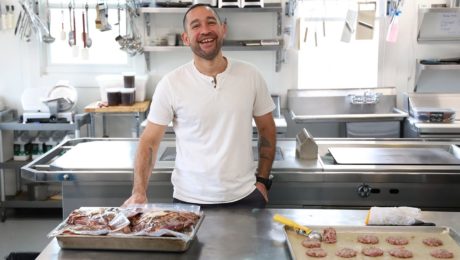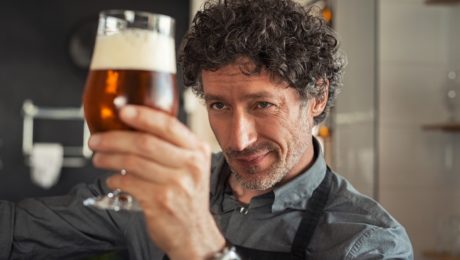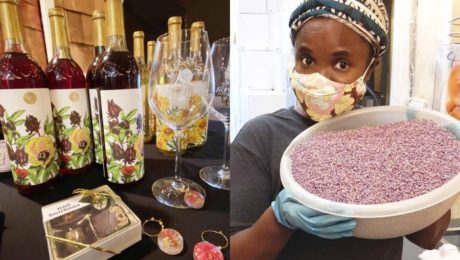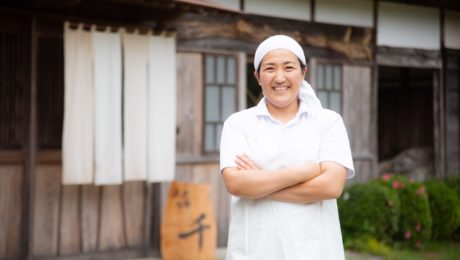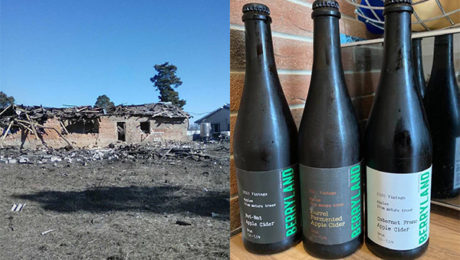Latest TikTokCraze: Gut Health
Doctors and microbiologists warn: despite what the latest social media trends proclaim, there’s no quick fix for better gut health. More influencers are promoting their “cures” — from drinking aloe vera juice to boiling apples — on TikTok. Their videos are getting millions of views — and are raising concerns from medical and scientific authorities.
“If somebody is claiming to have something that will immediately turn gut health around, you should be skeptical of that,” says Justin Sonnenburg, a professor of microbiology and immunology at Stanford. The article in The New York Times notes Sonnenburg advocates for “long-term lifestyle habits that can benefit the gut — ones that rarely go viral or make their way to social media acclaim.”
Sonnenburg’s groundbreaking study last August showed fermented foods — like yogurt, kimchi, kefir, sauerkraut and kombucha — can increase the diversity of gut bacteria. “His research found that people who ate six servings of fermented foods each day saw these benefits — the equivalent of consuming one cup of yogurt, one 16-ounce bottle of kombucha and one cup of kimchi in a day,” the article continues.
The Times interviewed a panel of experts that included a dietitian, sociologist, gastroenterologist and Sonnenburg. They say, to improve your gut, change your lifestyle. They encourage eating more fiber, eating fermented foods, limiting processed foods and lowering stress levels.
Read more (The New York Times)
- Published in Health
Zero Waste with Fermentation Techniques
Paste Magazine highlights the fermentation philosophy of Chef David Porras, who operates the Oak Hill Café and Farm. The hyper-local site, a 2020 James Beard semi-finalist for Best New Restaurant, operates in Greenville, South Carolina, on a 2.4-acre farm.
Porras’ kitchen, according to the magazine, “looks like an alchemist’s workroom, jars and tubs of experimental pickling, emulsions and infusions dotting the counter.”
“I was always interested in learning about fermentation. Fermentation is a flavor — you can use it for cooking just like lime or lemon juice,” he said.
The restaurant’s menu reflects a true farm-to-table approach. They use permaculture (sustainable agriculture planning to mimic nature) to keep the farm at peak fertility to grow healthy produce. By fermenting instead of trashing unused food, they’ve reduced 50% of their food waste.
“We try to be zero waste by applying fermentation techniques as well as drying, infusion, teas, powders and compost tea,” he said.
Read more (Paste Magazine)
- Published in Food & Flavor
South Carolina Classifies Kombucha as Alcoholic
Kombucha can no longer be legally sold as non-alcoholic in the state of South Carolina. A new rule change in state code set a maximum alcohol content for beers and other fermented beverages, but did not set a minimum alcohol level. Any fermented beverage with an alcohol content above 0.0% — any trace of alcohol — is now considered alcoholic by default.
Last month, TFA wrote about a decades-old South Carolina law that threatened kombucha and non-alcoholic beverage producers selling their fermented drinks in the state. Kombucha, which typically contains less than 0.5% alcohol [the legal definition of an alcoholic beverage in the U.S.], has always been deemed non-alcoholic, sold on grocery store shelves next to refrigerated juices.
Now, any brand selling a fermented beverage in the state must apply for an alcohol license, and their drink cannot be sold to anyone under the age of 21.
“Effective immediately, all of these producers and retailers will have to cease business until they receive the proper licensing, which will take several months to get if they’re located in South Carolina and the money to get their facilities up to code,” said Brook Bristow, an attorney specializing in beverage law, in a statement about the rule change. “So, until then, no sales, i.e., no money.”
Adds Gabriel Coggins, owner of the S.C.-based Kava Konnection:“Of all the things lawmakers could focus on to restrict and take away from the public, kombucha was the last thing I expected. It’s a healthy product, and the only logical reason I can see beyond some strange maliciousness toward it is that they just didn’t understand what they were doing.”
Read more (Greenville Journal)
- Published in Business
The Ancient Origins of Japanese Soy Sauce
Soy sauce is arguably the most important seasoning in Japanese cooking. Its well-balanced, salty-sweet taste and deep layer of umami richness make nearly all foods taste more delicious and satisfying. Its uses range from a dab on sushi to a splash into noodle soups and stir-fries, as well as the featured flavor of glazed dishes like teriyaki,” reads an article in BBC Travel.
The author traveled to the port town of Yuasa to learn more about the history of the “holy grail of Japanese cuisine: soy sauce.” In 2017, the country’s Agency for Cultural Affairs designated Yuasa as a Japan Heritage Site for being the birthplace of Japanese soy sauce. Soy sauce was first made in Yuasa in the 13th Century.
At its peak, the small town with a population of around 1,000 had more than 90 soy sauce breweries. Today, there are five soy sauce shops and six Kinzanji-miso makers. The decline is related to the rise of mass-produced soy sauce brands, who skimp on quality for a lower-priced soy sauce. It’s estimated that only 1% of soy sauce brewers still produce using traditional methods.
Read more (BBC)
- Published in Food & Flavor
Mastering Indoor Mushroom Farming
After four decades of research, brothers from Copenhagen have developed a method to reliably cultivate morel mushrooms indoors, year-round, in a climate-controlled environment. Morels typically grow for only a few months in the spring in finicky, woodland locations. They also sell for a high price.
Jacob and Karsten Kirk, 64-year-old twins, yielded 20 pounds per square yard of morels in last year’s crop. Karsten said: “the cost per square meter for producing a morel will be roughly the same as producing a white button mushroom.” They call their efforts the Danish Morel Project and they’re still figuring out how to commercialize it.
Kenneth Toft-Hansen, a Danish chef and winner of the 2019 Bocuse d’Or, notes if the Kirk brothers are able to master sourcing morels widely and affordably, “it will be a game changer for the food industry.”
Read more (The New York Times)
- Published in Food & Flavor
Tastier Non-Alcoholic Beer
Though non-alcoholic drinks are growing in popularity, alcohol-free beer has been a laggard. These brews lack the flavorful aroma of hops, with the resulting beverage flat and watery.
Mimicking beer’s flavor profile has been challenging for brewers hoping to appeal to dry drinkers. Some producers add aroma hops in the final stages of brewing, but it’s expensive and wasteful.
“When you remove the alcohol from the beer, for example by heating it up, you also kill the aroma that comes from hops. Other methods for making alcohol-free beer by minimizing fermentation also lead to poor aroma because alcohol is needed for hops to pass their unique flavor to the beer,” says Sotirios Kampranis, a professor in University of Copenhagen’s department of plant and environmental sciences who led the research.
Now researchers from the university have found a possible solution. Their innovation uses baker’s yeast that’s grown in fermenters and releases an aroma of hops. Results of their study were published in the journal Nature.
“After years of research, we have found a way to produce a group of small molecules called monoterpenoids, which provide the hoppy-flavor, and then add them to the beer at the end of the brewing process to give it back its lost flavor. No one has been able to do this before, so it’s a game changer for non-alcoholic beer,” Kamprani says. “When the hop aroma molecules are released from yeast, we collect them and put them into the beer, giving back the taste of regular beer that so many of us know and love. It actually makes the use of aroma hops in brewing redundant, because we only need the molecules passing on the scent and flavor and not the actual hops,” explains Kampranis.
Sustainable Solution
Their discovery represents a potential breakthrough for the overall beer industry because, researchers point out, it could improve beer’s sustainability.
Aroma hops require an enormous amount of water. Over 713 gallons are needed to grow one kilogram of hops. And sourcing fresh hops involves a carbon-heavy supply chain. Hops are farmed mainly on the U.S. West Coast, so trucks and refrigeration units are needed for transportation .
By using baker’s yeast, researchers can create a hoppy flavor without wasting gallons of water and creating carbon emissions.
“With our method, we skip aroma hops altogether and thereby also the water and the transportation. This means that one kilogram of hops aroma can be produced with more than 10.000 times less water and more than 100 times less CO2,” Kampranis says. “Long term, we hope to change the brewing industry with our method – also the production of regular beer, where the use of aroma hops is also very wasteful.”
Kampranis and colleague Simon Dusséaux plan to have the process ready for the brewing industry by this October. The two have founded the biotech company EvodiaBio.
- Published in Food & Flavor, Science
An Overlooked Wine Category
“Aaliyah Nitoto, winemaker at Free Range Flower Winery, is tired of hearing that the category of wine is exclusive to grapes. For centuries, wine has been made from many kinds of plant products, she says, like grapes, apples, pears, rice and flowers,” reads an article in Wine Enthusiast.
The magazine highlights the history of flower wine, which has variations in the Middle East, Asia, Europe and even the U.S. The process to make the wine is different from a traditional grape wine. Fresh or dried flowers are boiled and crushed, then yeast and a sugar source are added to start the fermentation process.
Flower winemakers lament that their product is not respected in the wine industry. Flower wine has been made primarily by middle- to lower-income women.
“That can tell you right there why they were relegated to obscurity. The people who owned tracts of lands that had money and influence and got to name things like ‘noble grapes,’ they got to say what was wine and what wasn’t,” Nitoto (pictured) adds. “The opinion of people in this country over the last 100-odd years to try to get rid of this category doesn’t stand up to the history of winemaking, which is thousands of years old, which does call this wine.”
Read more (Wine Enthusiast)
- Published in Food & Flavor
Japanese Cheese
Using local microbes, sakura blossoms, sake and takesumi (bamboo charcoal), chef and microbiologist Chiyo Shibata wants to “introduce Japan through cheese.” She runs cheesery Fromage Sen in mountainous Chiba Prefecture east of Tokyo.
Shibata fell in love with cheese — not a part of a traditional Japanese diet — while visiting France as a child. She later studied microbiology and fermentation at Tokyo University, then apprenticed to cheesemakers in France. When she returned to Japan to work at a government food safety lab, cheesemaking became her side hobby. Asked to analyze the safety of dried fish maker Koshida Shouten’s 50-year-old brine, Shibata made an interesting discovery. Not only was it safe, but the brine was teaming with lactobacilli. Inspired by the world of microbes, Shibata used a sample of brine as the foundation for her Japanese cheese.
“These microbes are the way to realize the terroir unique to this place and convey the message that this is our own cheese,” she says. She opened her rural cheesery in 2014 and has since won multiple honors, including Japan Cheese and World Cheese awards. Her handcrafted cheese, made with local ingredients, is aged 2-4 weeks. “Each ingredient is good on its own, but when you bring them together, they draw out their strengths and become something even more beautiful.”
Interestingly, Eric C. Rath, a professor of Japanese history at the University of Kansas, says cheese was never traditional fare in Japan because grazing cows on the country’s rocky terrain is difficult. But ancient texts describe three things similar to cheese: so, raku and daigo. Daigo was described as “the epitome of dairy products. Buddhist monks compared its taste to enlightenment,” Rath said. It’s unknown how these dairy products were made.
Read more (Atlas Obscura)
- Published in Food & Flavor
Are Alt Proteins GMO?
America is full speed ahead in the regulation of precision-fermentation-derived food, but Europe has yet to approve its first company. Why the difference?
Alternative protein regulatory expert Hannah Lester (from Amgen Regulatory Consulting) says the precision fermentation landscape is hugely unbalanced between the two regions. The U.S. Food and Drug Administration (FDA) has approved various fermentation-derived products through the “generally regarded as safe” (GRAS) distinction.
The European Food Safety Authority (EFSA), though, says proteins made using precision fermentation aren’t pure. The EU labels them as genetically modified organisms (GMOs).Alt protein companies disagree with this description.
For example, one of the largest precision-fermented products, Impossible Burger, was required to submit a GMO dossier to the EFSA. Lester says labeling these products as GMO has become “highly political” and is full of gray areas.. She adds that both areas will face pushback on how precision fermentation products are named.
“There is going to be opposition about what we call these products,” Lester says. “There may be a battle ahead with the traditional farming stakeholders and more conservative member states who have their own agenda and want us to call these proteins derived by precision fermentation [something else].”
Read more (Food Navigator)
- Published in Business
Ukraine Cidery Destroyed by Russia
Berryland, an award-winning Ukranian cider and mead producer, was destroyed by a bomb in a Russian air raid. The employees escaped and were uninjured.
Owner and oenologist Vitalli Karvyha built his facility six years ago in the Makariv District of Kyiv. Karvyha makes his ciders and meads from local fruits and berries, and raised bees on site for the honey for his mead. His fermented beverages have earned him awards at Vintage Cider World in Germany and the Mazer Cup in Colorado.
Karvyha says he plans to rebuild, updating his status through Berryland Cidery’s Facebook page.
Read more (Broken Palate)
- Published in Business


